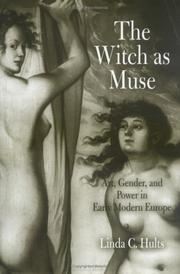| Listing 1 - 1 of 1 |
Sort by
|

ISBN: 9780812238693 0812238699 Year: 2005 Publisher: Philadelphia, Pa University of Pennsylvania Press
Abstract | Keywords | Export | Availability | Bookmark
 Loading...
Loading...Choose an application
- Reference Manager
- EndNote
- RefWorks (Direct export to RefWorks)
Occult topics have long fascinated artists, and the subject of witches their imagined bodies and fantastic rituals was a popular one for painters and printmakers in early modern Europe. Focusing on several artists in depth, Linda C. Hults probes the historical and theoretical contexts of their work to examine the ways witches were depicted and the motivations for those depictions. While studying the work of such artists as Dürer, Baldung, Jacques de Gheyn II, and Goya, Hults discerns patterns suggesting that the imagery of witchcraft served both as an expression of artistic license and as a tool of self-promotion for the artists. These imagined images of witches were designed to catch the attention of powerful and important patrons as witchcraft was being debated in political and intellectual centers. Dürer's early engravings of witnesses made in the wake of the Malleus maleficarum of 1487 were crucial in linking the seductive or aged female form with the dangers of witchcraft. The polarized idea of gender pervaded many aspects of early modern culture, including art theory. As the deluded female witch embodied the abuse of imagination and fantasy, so the male artist presented himself as putting those faculties to productive and reasoned use.
Witches in art --- Witchcraft in art --- Gender identity in art --- Art, European --- Witchcraft --- Sorcières dans l'art --- Sorcellerie dans l'art --- Identité sexuelle dans l'art --- Art européen --- Sorcellerie --- History --- Histoire --- Esoteric sciences --- Folklore --- gender issues --- witches --- magic --- Iconography --- Sociology of the family. Sociology of sexuality --- Dürer, Albrecht --- Francken, Frans [Younger] --- Gheyn, de, Jacques II --- Baldung Grien, Hans --- anno 1600-1699 --- anno 1500-1599 --- Europe --- Sorcières dans l'art --- Identité sexuelle dans l'art --- Art européen --- anno 1500-1799 --- gender --- magic [occult science] --- Gender --- Witches --- Images of women --- Visual arts --- Book
| Listing 1 - 1 of 1 |
Sort by
|

 Search
Search Feedback
Feedback About UniCat
About UniCat  Help
Help News
News